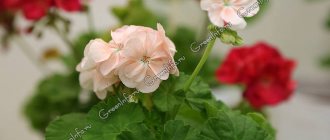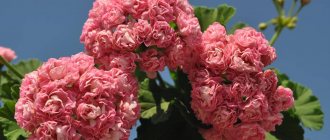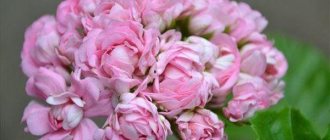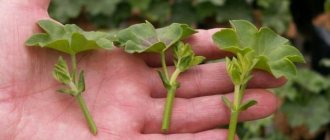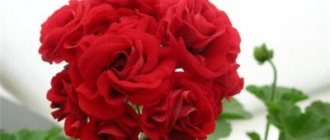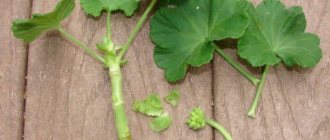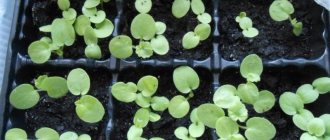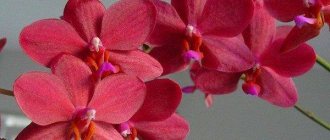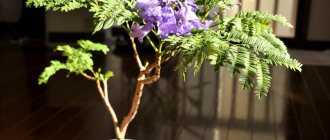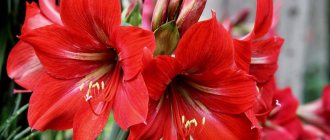History of origin
Botanists still cannot explain how yellow pelargoniums appeared in nature.
Many are inclined to believe that the yellow flowering, unusual for this plant, was the result of mutations. Others argue that it is the result of genetic engineering.
Natural pigments contained in pelargonium flowers are anthocyanins , they give purple and bright pink shades.
For this reason, breeders have encountered serious difficulties in developing yellow-flowering varieties. Whether it is a creation of nature, thanks to mutations, or of human hands, one way or another solar pelargonium exists and carries a yellow gene, which is always “linked” to the gene responsible for increased leaf rigidity. Therefore, the outlines of the bush of this plant are not the most beautiful if it is not refined.
The birthplace of pelargoniums is the African continent.
Common varieties
The first variety of yellow pelargonium - “First Yellow” - was presented to the public at the exhibition “Flowers-2009”, and work on the targeted breeding of pelargonium with yellow flowers has been carried out since the 80s of the last century. The progenitor of “First Yellow” is a pelargonium with pale yellow flowers.
Breeders crossed various varieties: “Princess Fiat”, “Lara Purnal”, “Millfield Gem” with the original plant in order to obtain a distinct yellow color of the petals. The first hybrids had a subtle cream tint and red markings on the petals.
Other varieties of yellow pelargonium:
- 'Guernsey Flair': It has branched stems and medium-sized light lemon flowers.
- 'Buttermilk': It has creamy yellow flowers and velvety green foliage.
- “Creamery”: the result of crossing species of pelargonium, it has a lush inflorescence of narrow light cream petals.
- Pelargonia pulverulentum Oribi Flats and Pelargonia gibbosum are a variety of flowers similar to those of the snapdragon plant, with dark purple or brown markings.
Such pelargonium is called yellow with a certain stretch, since its flowers are more likely to have a cream, vanilla and pale lemon hue. Its flowering season is short and cannot be called abundant: only 3-5 flowers are formed on the stems.
Check out the photo for the varieties of flowers:
Botanical description
Pelargonium yellow belongs to the geranium species . This plant is a perennial subshrub. Belongs to the species zonal pelargoniums.
The main feature of pelargonium species is the disproportionate arrangement of flower petals. The three lower petals are always smaller than the two upper ones.
Pelargonium species are exclusively indoor plants . They will not survive the winter in the garden, unlike geraniums, some species of which survive the winter well in flower beds.
Common varieties: photos and descriptions
FirstYelloy
A variety with lush double yellow flowers, their diameter is 2-3 cm.
Guernsey Flair
The flowers are medium-sized, light lemon, the bush turns out to be lush, as the stems produce many branches .
Buttermilk
A popular variety with leaves that look like green velvet and creamy yellow flowers.
Creamery
This variety has the most lush inflorescence, consisting of light cream narrow flowers.
Pelargonia pulverulentum Oribi Flats and Pelargonia gibbosum
Their pale lemon- colored blooms are similar to those of snapdragons . It is not abundant; 3-5 inflorescences appear on the stems, which quickly fade.
First yellow pelargonium
First Yellow
At the Flowers 2009 exhibition, pelargonium lovers were pleased with the appearance of the first yellow pelargonium “First Yellow” from, which purchased it from. It is known that work on this variety took 20 years, and other yellow varieties are on the way.
Pelargonium “ First Yellow” is a compact creamy yellow semi-double variety of zonal pelargonium with rich green leaves without a zone characteristic of this species. Propagated by cuttings, not by seeds. In industrial cultivation there is little need for growth regulators.
The origin of the variety is hidden in mystery - either it is genetically engineered, or it was obtained through conventional hybridization with yellow South African pelargoniums. If the second statement is true, then there must be a parent with yellow flowers. Is there such a contender?
All zonal pelargoniums are hybrids obtained from crossing two species - Pelargonium zonale and Pelargonium inquinans. They got their name for the presence of characteristic stripes on the leaves, although today there are many varieties without them.
Pelargonium articulatum – inflorescence
In South Africa, there is a species of articulated pelargonium (Pelargonium articulatum), a low plant with pale yellow flowers and a rhizome consisting of thick and thin sections, for which it probably received its species name. It is characterized by early senescence of leaves, which become quite unattractive at the time the plant blooms. Flowering cannot be called abundant - from 2 to 5 flowers are formed on several stems, and the flowering season is short. The plant is not very attractive for cultivation in pots - long petioles and drooping leaf blades are a poor decoration. But for hybridization, in addition to the unusual color of the flowers, there are other useful signs - short internodes, promising compactness, and light aromaticity of the leaves.
Pelargonium articulatum – leaves
This species has been used in Australia for interspecific hybridization through controlled cross-pollination. The first crossing of zonal pelargonium with articulated pelargonium was made in 1985. Pollen from an African plant was used on the paternal side. The main intrigue that everyone was interested in was whether the hybrids would have yellow flowers?
First Zonarctic hybrid
The first born was born in 1986 and had simple white flowers with reddish markings on the upper petals. The plant's habit was something between the parents. But the very fact of the possibility of crossing was a significant result. Subsequently, many hybrid seedlings were obtained, all of them different from each other.
A year later, it was possible to obtain several hybrids that had pale yellow flowers, but this color remained stable for only a few days. Only since 1993 have there been positive trends. In 1994, a hybrid was obtained that had 80% of the genome of articulated pelargonium and had semi-double pale yellow flowers of 9-11 petals, but it turned out to be too tall and irregular in shape. However, it showed that the yellow color of flowers can be inherited. We took 3 varieties as a starting point – “Lara Purnal”, “Princess Fiat” and “Millfield Gem”. As a result, two promising seedlings were obtained from these parents - “Lara Classic” and “Lara Polka”, and later “Lara Signal”, which were further pollinated with pollen of articulated pelargonium. In 1985, the self-explanatory “hybrid” name “Zonarctic” was coined, to which the prefix “Lara” was added on behalf of the breeder. Note that to obtain the “Lara Zonarctic Hybrid” line, pelargonium articulated was used 6 times both as a father and as a mother plant.
Semi-yellow Zonarctic pelargonium 1993
Subsequently, seedlings were selected that had at least 65% of the genome from Pelargonium articulatum, which turned out to be necessary for maintaining the yellow color and, at the same time, the most compact and symmetrical in shape. So there is material for interspecific hybridization.
One of the last Zonarctic seedlings
how to find out Mosenergo’s debt on a personal energy account
Another possible way to obtain yellow pelargonium is genetic engineering. It is known that the color of flowers of any plants is determined by pigments related to phenolic compounds: anthocyanins give colors from orange and red to blue and violet; flavones color plant tissues yellow and cream tones. The combined presence of anthocyanins and flavones gives a variety of color shades. Pelargonium gives its name to the red pigment - pelargonidin, which predominates in the color of zonal pelargoniums. It has been established that the yellow pigments of pelargonium are flavones and carotenoids.
The possibility of obtaining yellow pelargonium was of interest back in the 19th century, but it was impossible to do this using conventional methods, since in zonal pelargonium the color of flowers is determined by anthocyanins, and there are no pathways for the synthesis of flavones and there is no gene for yellow color. Genetic engineering methods allow you to introduce this gene from another plant.
Since it is not known whether this was done to obtain the yellow pelargonium “First Yellow”, we will give an example. Through biochemical studies, it was established that the color of snapdragon flowers is due to pigments called aurones. The genes responsible for the synthesis of yellow aurone, aureosidine glycoside, were identified and inserted into the genome of the torenia variety “Summerwave Blue” in order to obtain yellow flower color. However, endogenous anthocyanins, responsible for the blue color of torenia, remained dominant and did not allow yellow pigments to appear. To solve this problem, it was necessary to introduce another gene responsible for suppressing the synthesis of anthocyanins. As a result, it was possible to obtain yellow coloring of torenia flowers. A similar strategy could be used for pelargonium.
Guernsey Flair (Thompson & Morgan)
Buttermilk (Van Meuwen)
One way or another, yellow pelargonium is obtained. But is she the first? The English one also announced a breakthrough in floriculture - the world's first yellow zonal pelargonium " Guernsey Flair" with branched stems and medium-sized flowers, lemon-colored. Another contender for the championship is pelargonium “Buttermilk” (“Curdled milk”), creamy yellow in color with velvety green foliage, from another English one. Pelargonium “Guernsey Flair” has the same face, and, as they say, is not yellow at all, but rather creamy.
Since the origin of all three new products is unknown, only one thing is clear: if these are not miracles of genetic engineering, then, most likely, “chickens” from the same incubator - Australian.
The article uses materials from the site
Choosing a location and landing features
Location and lighting
The plant will do well on east and south windows. It is imperative to protect it from direct sunlight with a curtain, otherwise the leaves will burn. Pelargonium can be placed not on the windowsill itself, but not far from it, but so that the lighting from the window is still good.
Yellow pelargonium does not tolerate close proximity to other plants. Therefore, the pot with it should be kept at a distance so that the leaves do not come into contact with the leaves of other indoor flowers.
Pot
The best option would be deep, but not wide. In a very wide pot, pelargonium will not bloom so profusely .
The soil
Remember that pelargoniums grow naturally in Africa, so this plant does not need very nutritious soil. A mixture of garden soil, sand and peat in equal proportions would be ideal. At the bottom, drainage from expanded clay or crushed brick is required. You can also purchase special soil for pelargoniums.
If the soil is taken from the street, it must be calcined in the oven for at least an hour to kill all microbes. Neglecting this advice can lead to the rapid death of such a rare flower.
Transfer
You cannot replant a flowering plant after purchase, even if the soil in which it is located seems poor. It is necessary to wait until the end of flowering, only then will the transplant be successful.
Pelargoniums are replanted in the spring . If the flower was purchased at another time of the year, there is no need to replant until spring.
The flower is removed from the old pot along with a lump of earth. You cannot shake out the roots from the soil and wash them.
Drainage is laid out at the bottom, then soil is poured, pelargonium is placed and sprinkled with earth on all sides. Then you need to water a little.
Varieties of pelargonium and geranium
Lemon geranium
Propagation of geranium at home, when to plant so that it blooms in summer
This is a variety of fragrant pelargonium. The plant is quite tall, with heart-shaped leaves with sharp tips. The name is given by the characteristic smell.
Important! With slight contact with the leaves (even if you kiss them), they release a healthy lemon scent, refreshing the air.
Lemon geranium grows up to 70 cm in height and 35 cm in width. Blooms infrequently. The leaves have a beautiful graceful shape and are framed in the form of lace. The shades of the leaves vary from light green to deep green. In some varieties, the leaves exhibit purple and burgundy shades.
The flowers are light, small, growing either alone or in inflorescences.
Lemon geranium loves a lot of sun. Its aroma improves sleep. The plant purifies the air, so it is recommended to place it in the kitchen. Geranium can be outdoors, in which case it must be protected from direct sunlight.
Lemon geranium
Do not place the plant near the air conditioner or near the radiator. Lemon geranium is afraid of drafts. The optimal air temperature is about 20 degrees. The plant needs regular watering (daily in summer).
Pelargonium Lara Harmony
This is one of the most common varieties of geranium. Pelargonium is unpretentious in care.
Interesting. Pelargonium Lara Harmoni flowers look like small roses.
Pelargonium lara harmony has a straight stem with developed roots. The leaves are round, palmate, dark green, with a bloody red or brown circle. They emit a minty smell. The leaves are covered with soft, fleecy hairs.
Pelargonium Harmony blooms for a long time: under favorable conditions - all spring and summer. If the lighting is good, then pelargonium Lara Harmoni can bloom in autumn and even winter. If the plant blooms year-round, it has small, pale flowers.
After flowering ends, seed pods appear. The plant can withstand frosts up to 28 degrees. Requires good watering and does not withstand drought. The soil should be slightly acidic. In order for the plant to bloom well, you need to add a little leaf soil.
Pelargonium requires lighting and space. In summer it needs to be watered every other day.
Pelargonium Lara Harmony
Yellow geranium
This is a rather rare plant. The bush has dense foliage. The stems are branched. The flowers are collected in umbellate inflorescences. The leaves are pubescent.
Yellow geranium loves light and warmth and requires a lot of space. At the same time, you need to avoid direct sunlight.
Note! This type of geranium does not grow well in close proximity to other plants. The optimal placement of yellow geranium is an eastern and southern window.
There are many varieties of yellow geranium. They vary in flower color: from pale yellow to rich, leaf color - from light green to dark green.
Yellow geranium
Yellow pelargonium does not need too nutritious soil. The pot needs to have drainage. The soil should be loosened periodically.
Field geranium
This is a herbaceous perennial plant with a rhizome and ground part up to 80 cm high. Wild field geranium is much lower. The lower leaves are pinnate, the upper ones are short. The stems are pubescent and have a pleasant spicy aroma. The flowers are mostly purple and blue. In decorative varieties they can be double.
Field geranium bushes take root well in the garden. Blooms for at least 2 months.
Note! The bush does not lose its decorative properties throughout the season. At the end of flowering in autumn, the leaves turn red, brownish-purple.
Geraniums can be dug up from a meadow or forest edge and planted in the garden. The soil should be fertile and moderately moist.
Field geranium
Geranium pink
It is an erect, branched and evergreen shrub. Reaches 1.3 m in height. The branches of rose geranium become woody over time. The leaves have small hairs and have a pleasant rose scent. They are shaped like a heart. The flower is five-petalled, placed in umbels. Each petal has crimson stripes. It blooms from late winter to early summer with a peak in spring.
Pink geranium is a heat-loving plant. Requires a little moisture. Feels good in a hanging basket or container. Pink geranium does not tolerate severe frosts.
Pink geranium
Pelargonium Rococo
This is a spectacular and very beautiful variety of geranium. The flowers are very delicate and resemble roses. They are grouped into beautiful large inflorescences. The buds are large and lush. The petals of Rococo pelargonium have a delicate pink color. The foliage is pale green.
Pelargonium Rococo is an unpretentious plant. She loves sunlight very much; in shaded places it will not bloom profusely and beautifully. In order for geraniums to delight you with their flowers at home, the pot should be placed on a well-lit windowsill.
Compliance with lighting conditions for rococo pelargonium guarantees the presence of large flowers throughout the growing season. It is in well-lit places that a beautiful contrasting belt appears on the leaves.
Optimal temperature conditions for the plant are about 20-23 degrees during the day and 15 degrees at night. In summer it thrives outdoors.
The soil for geraniums should be nutritious and loose. Watering should be sufficient.
Pelargonium Rococo
Pelargonium Pink Rambler
This plant is distinguished by buds of a rare two-color color. Their appearance resembles a rose. The Pink Rambler bush reaches 60 cm in height. The leaves have a specific smell and are rich in geranium essential oil.
This geranium can be grown at home and in the garden. Moreover, in the garden plot it will produce buds from spring to early autumn.
Interesting. One bush produces over 20 beautiful flowers per season.
This geranium loves loose soil that is not too rich in nutrients. It is enough to plant 10 seedlings on one square meter. The optimal time for planting in open ground is early June. The first week after planting, seedlings need to be watered abundantly. There is no need to fertilize at this time.
Faded inflorescences of pink rambler pelargonium need to be cut off, so the plant will direct its strength to the buds. Geranium is fed on warm days.
Pelargonium Pink Rambler
Pelargonium Grandiflora
The upper 3 petals of this plant are large, the lower 2 petals are smaller. The flowers are large in size. Some flowers have double inflorescences of different colors: from white to purple. Shoots reach 50 cm in height.
The plant has no characteristic odor. It blooms for only a few months. Pelargonium requires good lighting (it must be protected from the scorching rays of the sun). In hot weather, it needs to be shaded on the window to avoid burns. The ideal place for pelargonium is a glazed balcony or loggia.
In winter, when caring for Grandiflora pelargonium at home, you need a temperature of about 15 degrees, otherwise it will not bloom in the spring. It needs good watering and drainage. You cannot flood the plant - it will die in the swamp soil. In spring and summer, you need to feed pelargonium with potassium fertilizers. Remove faded flowers. Replant the plant every 3 years.
Pelargonium Grandiflora
Himalayan garden geranium
This is a beautiful flowering rhizomatous perennial plant. The stems of Himalayan garden geranium and plenum are low and branched, up to 30 cm high. The flowers are large, purple, blue or blue, with red veins the color of tomato. Himalayan geranium blooms from late spring to mid-September.
The plant loves the sun, but does well in shaded areas. Here the flowers become larger.
Planting and caring for Himalayan garden geraniums is easy. Geraniums like the soil to be loose and well watered. For abundant flowering, it is important to feed it with complex fertilizers.
Himalayan geranium needs plenty of watering.
Himalayan garden geranium
Pelargonium Richard Hudson
This plant is cultivated in Russia only as an indoor plant. The bush is very compact and dense. The leaves are small and green. The flowers are double, their edges are jagged. The shade is pink with small inclusions and spots; it may differ in some varieties. The inflorescences are densely arranged.
Lighting for Richard Hodgson varietal pelargonium should not be too intense. At midday, the plant needs to be shaded. Coolness at night is important to him. Pelargonium overwinters at a temperature of about 10 degrees, after which it will bloom better. Drafts are harmful for pelargonium Richard Hudson.
Plant care
Watering
The plant does not tolerate waterlogging very well . For pelargonium, a few days of drought are better than constant heavy watering. Therefore, you need to water when the soil in the pot becomes dry.
You can water only with filtered drinking water that has warmed to room temperature. If there is no such water, then you need to take it from the tap and leave it for at least a day so that the chlorine evaporates. If the rooms are cool in winter, you can slightly heat the water for irrigation so that it is not icy.
Yellow pelargonium cannot be sprayed! This will harm its downy leaves and flowers.
Top dressing
During the flowering period, to make it last longer, phosphorus-potassium fertilizers are used , which contain a low concentration of nitrogen. Liquid fertilizers can be used.
It is necessary to feed every week from May to September. In autumn and winter, the plant does not need feeding.
You cannot feed yellow pelargonium with organic fertilizers ; it will die from this. Only mineral ones are useful for her.
Topping
At the end of winter, the tips of the branches are pinched so that the bush takes on a beautiful shape and produces side shoots. Thanks to this, it will be lush.
Possible pests and diseases
Fungal diseases . Overwatering can lead to Verticellium wilt. The fungus starts in the soil and then covers the plant. It is necessary to transplant the pelargonium into a new pot and establish a normal watering regime.- Late blight . Pelargonium can get late blight. Many gardeners advise to immediately get rid of such a plant, since it is impossible to cure this fungal disease. But in its early stages you can try to cure it with Previkur and Profit-Gold.
- A fatal disease for pelargonium is black leg . This is a fungus that attacks the roots; it is insensitive to fungicidal drugs.
- Fungal infections . If the leaves are covered with rust, this also indicates a fungal disease. Rust develops due to excessive watering and keeping in a room with high humidity. It is successfully treated with fungicides. Before this, all affected parts of the flower are removed.
- mites appear due to lack of watering and dry air in the room. You can get rid of them by purchasing a special preparation for flower growers at a flower shop.
- Whiteflies can appear on pelargonium ; these insects hide on the underside of the leaves. They give themselves away as sticky spots on the leaves. To destroy whiteflies, traps and karbofos are used.
- Aphids may appear on sunny pelargonium . These tiny insects sit on stems and leaves. Among the folk remedies, spraying with garlic tincture helps. But it’s still better to purchase a special insecticide.
A sick plant must be immediately isolated from others so that disease or insects do not affect all indoor flowers.
Diseases and pests
Gray rot
Most often, gray rot, as well as stem and root rot, affects pelargonium. The stems and leaves of pelargonium turn yellow, become covered with a gray coating, wither, and the flowers become spotted.
This fungal disease develops due to excessive watering and air humidity, as well as excessive fertilizing with nitrogenous fertilizers.
It is necessary to reduce the polystyrene, remove the affected leaves, stop feeding, and treat the plant with systemic fungicidal preparations (Vitaros, Fundahol, Rovrald, Ridomil-Gold).
Other diseases:
- Verticellium wilt begins with overwatering: the fungus begins to multiply in the soil and gradually covers the entire plant. Here it is enough to treat the flower with fungicides and replant it in drier soil in a new pot.
- Late blight is also a fungal disease, and gardeners have differing opinions about the possibility of its cure. Some recommend replacing the plant, some manage to cure it at an early stage of the disease with the help of Previkur and Profit-Gold.
- Blackleg affects the root of pelargonium. In this case, treatment is often useless, since the fungus of this species is not very sensitive to fungicides.
- Rust is another disease of pelargonium, which is caused by waterlogging of the soil and air. The leaves of the plant are covered with red spots, and on the reverse side - with convex foci of fungal infection. The plant is treated with fungicides and cleaned of affected parts.
Rust
- Aphids are the most common pest. Colonies of small spiders settle on stems, flowers, and under the leaves of pelargonium. They can appear on any plant.
You can fight aphids by treating them with soapy water and special insecticides, and it is better to remove severely damaged parts of the plant. Among the folk remedies against aphids, tincture of garlic or onion helps.
- Mites appear and begin to multiply on the plant when watering is insufficient and the air temperature is too high. To destroy them, use a soap solution, mineral oil or special anti-tick preparations.
- The whitefly usually hides on the underside of pelargonium leaves, and its appearance is indicated by yellowing of the leaves and sticky spots on them. Whiteflies can be destroyed with karbofos or its analogues, as well as with sticky traps.
Important! During the treatment period, the diseased plant must be isolated from others, since infections and pests very easily invade new plants, and an epidemic may begin in your flower garden.
Reproduction
Seeds
The advantage of this method is that strong and abundantly flowering plants grow. Seeds are sown in moist soil in the middle of winter and covered with film. When the sprouts hatch, they can be sprayed with a growth stimulator. You need to pick after 2 weeks, and after 8 weeks the plants are ready to be transplanted into permanent pots.
By cuttings
The advantage is that the cutting quickly takes root and begins to grow. To do this, you need to cut off a side shoot from the pelargonium, dry it a little and put water on it so that it grows roots. When they appear, you can plant them in a permanent pot.
What other varieties and species are pelargonium famous for? Read about pelargonium Silk, Angel, terry, rosebud, fragrant, Pak, garden, dwarf, ampelous.
Yellow pelargonium, although very rare, is unpretentious . If you follow all the simple rules for caring for it, the plant will delight you with its amazing flowering and help create comfort in your home.
